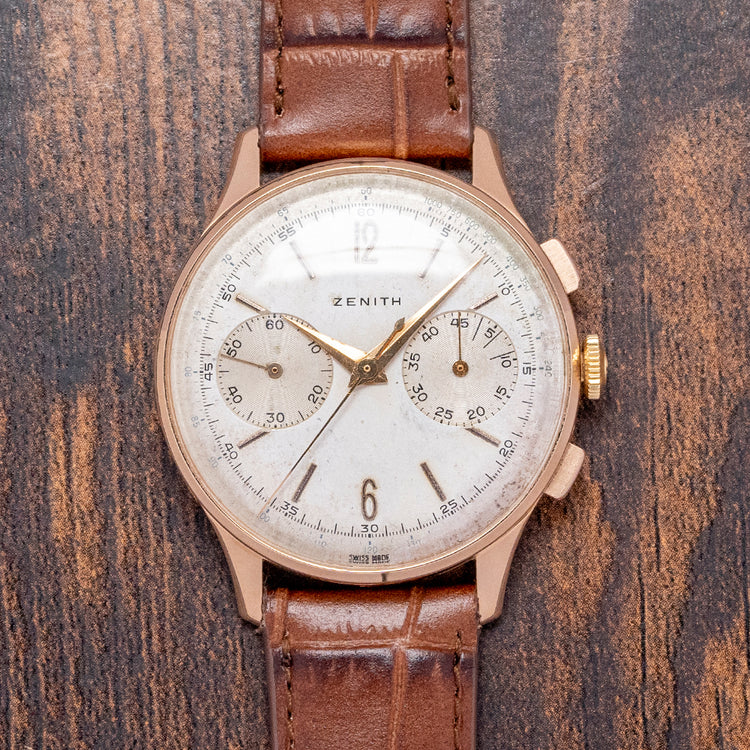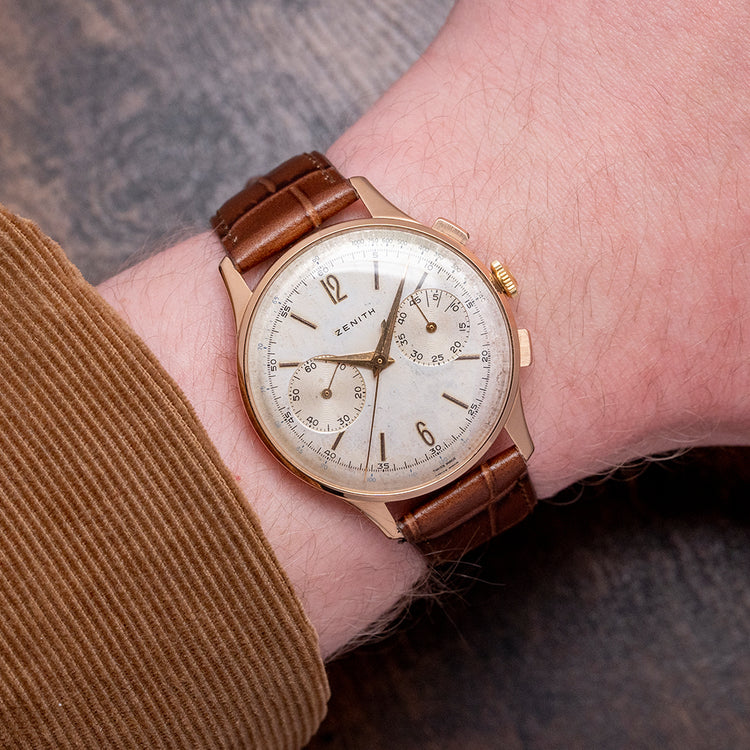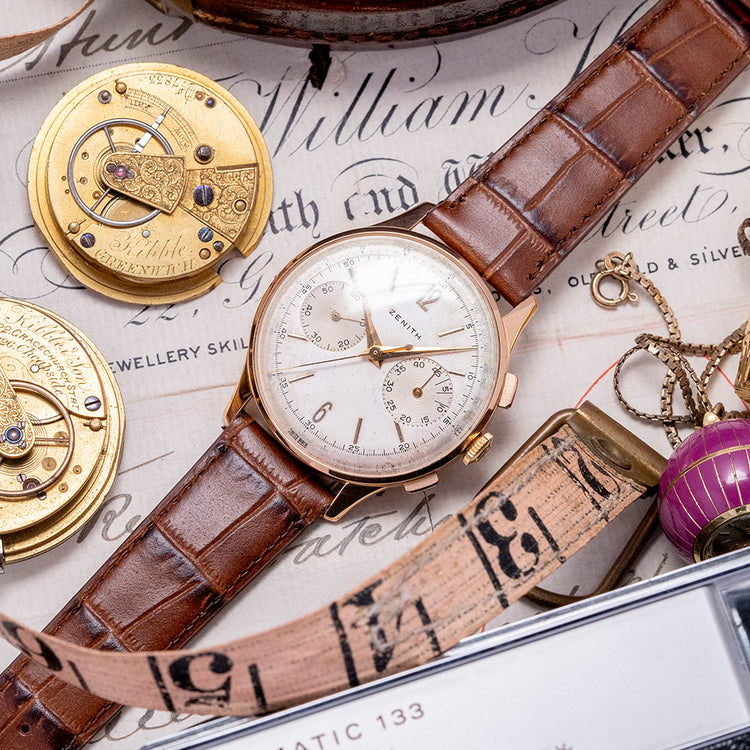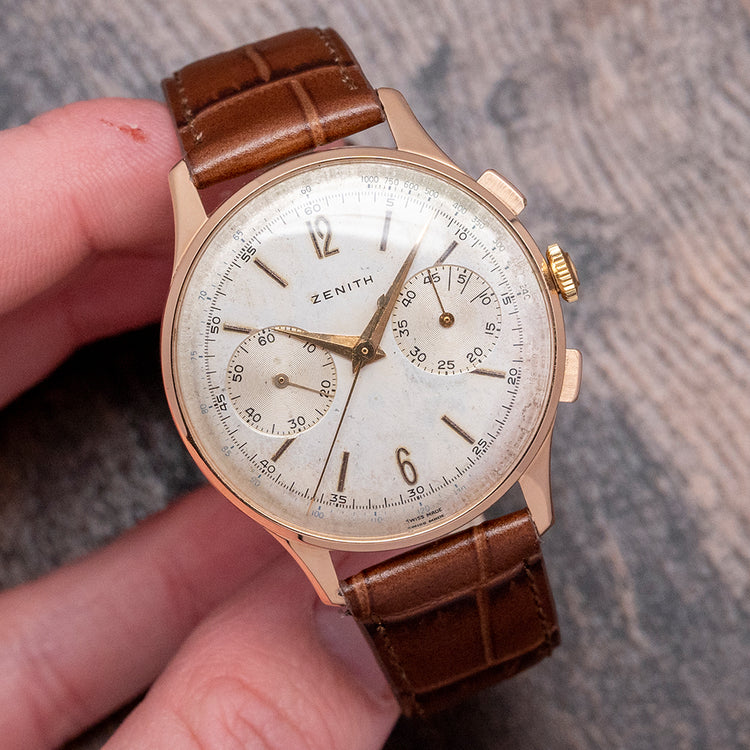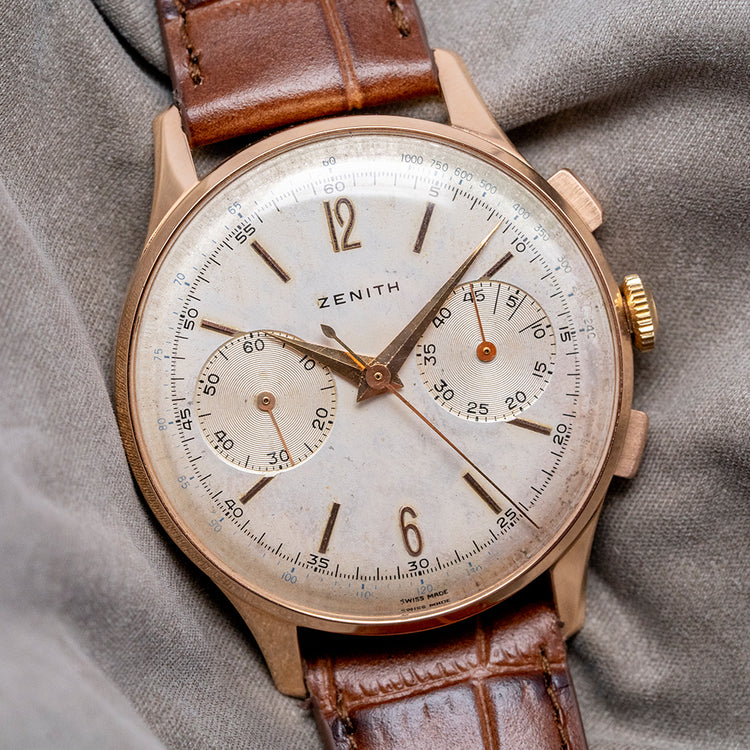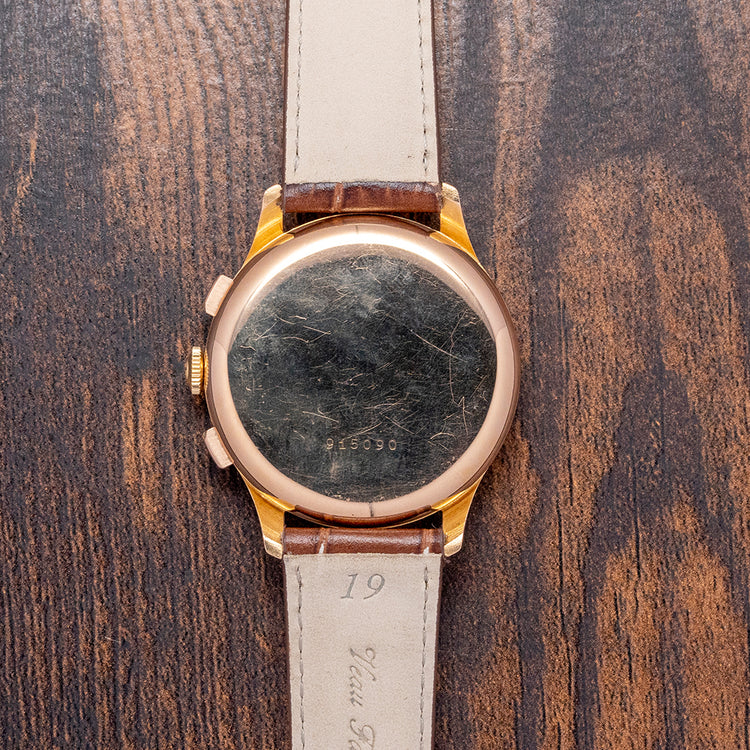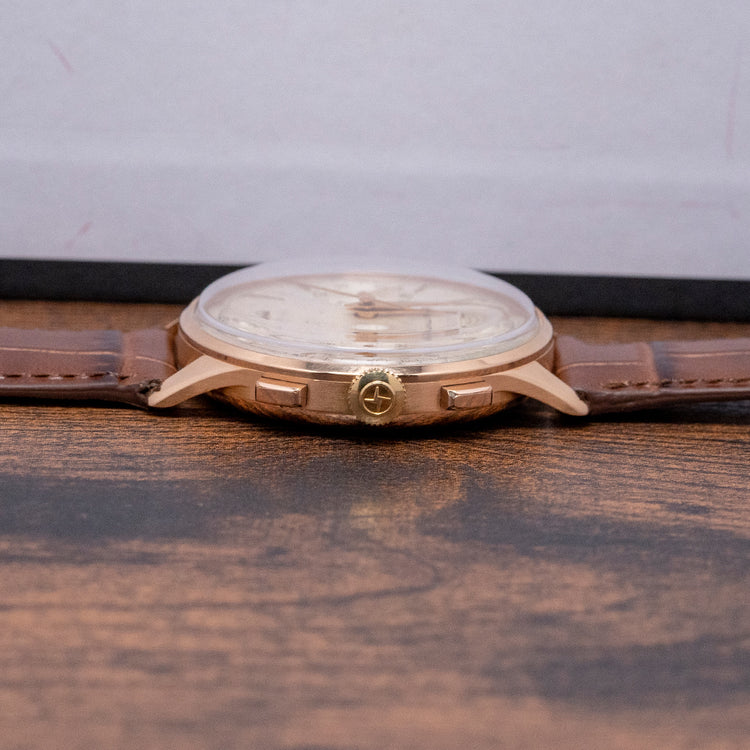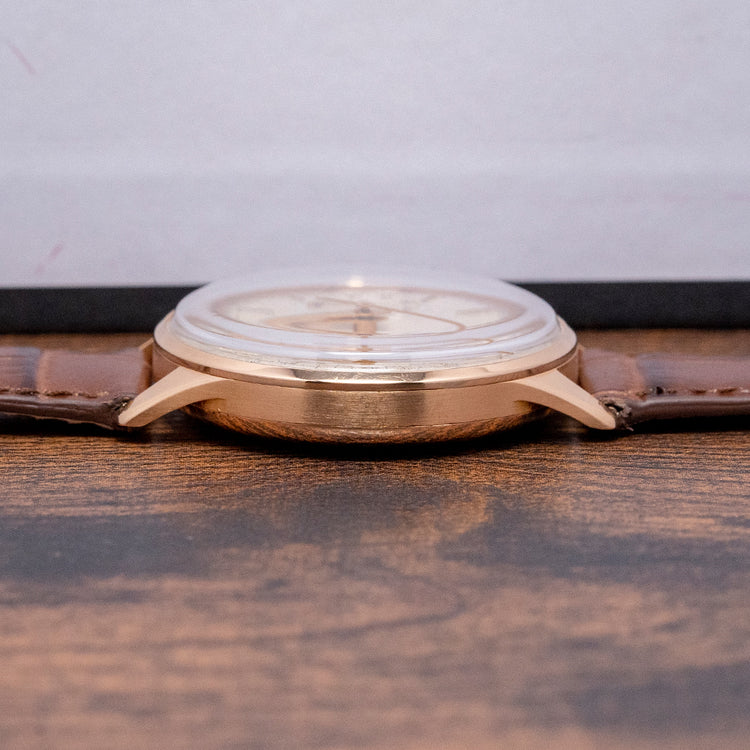More Information
Description
More
Less
We have here a stunning example of a 1950s Zenith 'Stellina' 156 D. Its oversized 37mm 18ct Pink Gold round case has finely tapered lugs. You can be sure of a comfortable fit on the wrist at 44.5mm lug-to-lug length and a thickness of 10.5mm. Rectangular pushers and a large crown sit on the right side. The case has a refinement that shouts out quality. The domed crystal sits proudly above the white dial. An outer Tachymetre is printed in black; the inner minute track is precisely executed, surrounding “12” and “6” Arabic numerals with elegant applied chamfered edge pink gold baton indexes to mark the hours, at 3 o’clock a 45-minute register and at 9 o’clock the continuous second's register, each slightly recessed with a concentric circular pattern. This combination provides excellent symmetry to the watch. Delicate pink gold dauphine hands and a teardrop counterweighted chronograph seconds hand finish the dial with an understated sophistication that Zenith is famous for. On the reverse, there is a plain snap-on case back. Inside a manually wound Zenith Cal. 156D, 17 jewels, 18,000 beats per hour. It is paired with a well-suited 19mm brown leather strap.
Points of Mention
More
Less
Personal Note
More
Less
Specification
More
Less
Movement : Manually Wound Zenith Cal. 156 D
Age : Circa. 1950s
Year : Circa. 1950s
Case Size : 37mm
Case Thickness : 10.5mm
Lug to Lug : 44.5mm
Lugs : 19mm
Condition : Pre-Owned
Box and Papers : None
Case Material : 18ct Pink/Rose Gold
Warranty : 12 Months NON-Waterproof Warranty
The wrist model's wrist size is 7inch
About Zenith
More
Less
Description
We have here a stunning example of a 1950s Zenith 'Stellina' 156 D. Its oversized 37mm 18ct Pink Gold round case has finely tapered lugs. You can be sure of a comfortable fit on the wrist at 44.5mm lug-to-lug length and a thickness of 10.5mm. Rectangular pushers and a large crown sit on the right side. The case has a refinement that shouts out quality. The domed crystal sits proudly above the white dial. An outer Tachymetre is printed in black; the inner minute track is precisely executed, surrounding “12” and “6” Arabic numerals with elegant applied chamfered edge pink gold baton indexes to mark the hours, at 3 o’clock a 45-minute register and at 9 o’clock the continuous second's register, each slightly recessed with a concentric circular pattern. This combination provides excellent symmetry to the watch. Delicate pink gold dauphine hands and a teardrop counterweighted chronograph seconds hand finish the dial with an understated sophistication that Zenith is famous for. On the reverse, there is a plain snap-on case back. Inside a manually wound Zenith Cal. 156D, 17 jewels, 18,000 beats per hour. It is paired with a well-suited 19mm brown leather strap.
Points of Mention
Personal Note
Specification
The Brand
Enquire or Book an Appointment
Would you like to discover further details about this watch, or perhaps arrange an appointment to view and try it on? Complete this form and a member of our team will get back to you shortly.
You May Also Like


























